
“The War at Home,” a landmark documentary about antiwar protests in the 1960s and ’70s in Madison, Wisconsin, has just been re-released nationwide. We speak with co-director Glenn Silber, two-time Academy Award nominee, about the making of the film and why he argues now is an important time to revisit the responsibility to stand up and say no to war.
More from this Interview
Transcript
AMY GOODMAN: This is Democracy Now! We end today’s show with The War at Home. That’s the name of a classic 1979 documentary about antiwar protests in the ’60s and ’70s in Madison, Wisconsin. The Academy Award-nominated film is now getting a second life with the release of a newly restored print. The filmmaker Michael Moore recently praised it, calling it “one of the best documentaries ever made.” Michael Moore wrote this is ”THE film about resistance.” This is part of the trailer for The War at Home.
BLAKE KELLOGG: Ken, why do you plan to burn your personal check in front of the Internal Revenue Service building here in Madison this morning.
KEN KNUDSON: Well, I would like to protest against the income tax system because of where most of the money goes. Ten percent is earmarked especially for Vietnam, which I consider to be an immoral war.
AMY GOODMAN: That’s the trailer for The War at Home. And for those who were just listening on audio, it’s the images of mass protest, the images of war and bombing in Vietnam. The film was just restored and re-released.
Well, recently, Democracy Now!'s Nermeen Shaikh and I sat down with one of the film's two directors, Glenn Silber, two-time Academy Award nominee, to talk about the film’s contemporary significance. I began by asking Glenn why he focused on one town, one city—Madison, Wisconsin.
GLENN SILBER: Well, co-director Barry Alexander Brown and I had lived through this experience. I was there as a college student from 1968 through ’72.
AMY GOODMAN: At the University of Wisconsin.
GLENN SILBER: At the University of Wisconsin. Barry had actually gone to high school there. And for me at least, having experienced that very intense antiwar movement that changed my life, I really felt we had lived through a story that had to be preserved. It had to be put on film, because I think that’s the best way; there’s no book that you can read about the antiwar movement that will give you the same sense of that 10-year experience in Madison.
And I think the best way to tell that story was to use our community as a microcosm of the whole period. Every single thing that happened anywhere in the country happened in Madison, from the very first antiwar demonstration in 1963, where you see the protesters wearing suits and ties, to four years later—well, we’ll see a clip of it maybe, of the Dow demonstration, and then, of course, as things got more intense after Kent State, where it became really this—
AMY GOODMAN: Well, let’s go to the Dow demonstration.
GLENN SILBER: OK.
AMY GOODMAN: Let’s go to what this is. It’s October 18, 1967.
GLENN SILBER: Yes. I think the Dow demonstration, at least in Madison, and probably elsewhere, is one of the most important demonstrations ever, because what was it? The university invited the makers of napalm, that horrible weapon of war, that really should have been outlawed, to begin with, as a crime, this gel that burns people to death. They invited them on the campus so they could recruit more future napalm makers.
And I think it’s important because in the University of Wisconsin, the antiwar movement was very focused on this. It became a real moral issue. And there was two years of organizing just around that issue. So when Dow Chemical came over to the community, this college, the students were ready, and they said, “We’re going to block you.” It was kind of, what we say, when the movement moved from protest to resistance. Up to that point, all the protests were kind of passive resistance, taking our cues from the civil rights movement. But with Dow, they drew a line, and they weren’t going to be quite as easy to go. And this time they also met some repression they never saw before.
AMY GOODMAN: A clip of The War at Home.
HENRY HASLACH: It was clear that the university was going to protect Dow. The plan was that people were going to go up to the Commerce Building again and sit down and be carried off—another nonviolent demonstration.
MARGERY TABANKIN: The people at that time’s consciousness about the war was at a stage of conscious active resistance. There was a straight determination to resist being removed from that building, if the police entered.
PROTESTERS: [singing] We will not be moved.
MAYOR PAUL SOGLIN: All they did was come in, four or five at a time, with clubs swinging, and just beat the hell out everybody in that camp as they just swept down the corridor.
MARGERY TABANKIN: Everybody sort of then just ran for it.
RALPH HANSON: So, after this initial impact here, then we were able to accomplish the objective of clearing the corridor area. But the problem then transferred itself from within the building to outside of the building.
MAYOR PAUL SOGLIN: The whole place was like a war zone. The critical moment was, a crowd began to gather because classes were just over, when the cops moved in. They started using tear gas. And it’s something like 4,000, 5,000 kids who were being affected by this thing. Well, suddenly all these fine middle-class kids at the University of Wisconsin are being tear-gassed and clubbed. And, I mean, I don’t know if it’s a time shock or what, but there was an awful lot of politicalization that took place in that 15, 20 minutes when the cops just let go with everything they had.
AMY GOODMAN: A clip from The War at Home about the Dow Chemical protest October 18, 1967, at the University of Wisconsin. So, Glenn Silber, talk about this moment and the university calling in the police and what this meant.
GLENN SILBER: Well, it was a real turning point in the antiwar movement in Madison. And actually, that week was a real turning point nationally, because it was the same week that, later on, they confronted the Pentagon, and there was a conflict like this.
Dow Chemical—you know, the university was so stupid. They should have just had their little recruitment off at the Hilton or something. And sometimes in movements, I think, there are moments when something unexpected happens. You and I were very involved in the Central America crisis, and no one thought it was a good idea to rape and murder four nuns, but that became the turning point that woke people up to what was happening there. So, there’s a—
AMY GOODMAN: And right before that, of course, the assassination—
GLENN SILBER: Of Archbishop—
AMY GOODMAN: —of Archbishop Óscar Romero, who has now become a saint.
GLENN SILBER: Canonized, yeah. So, anyway, so everyone was primed. This had been the results of two years of organizing. And one of the lessons I get out of looking at The War at Home today is that there is a relationship between the smaller core of people that are the most dedicated organizers and then how, in this case, it can affect 5,000 people, because of the overreaction of the police.
So this became a rallying cry. I didn’t get to Madison until one year later, but, you know, you could still feel it. It was still resonating, and it had really changed the character. It wasn’t like we’re going to be that nice. We’re not going to run around and, you know, throw rocks yet, but it’s going to be a more resistance.
And I think when you look back at this whole period we’re talking about, what’s important to talk about for today is that we really—the antiwar movement, at its base, is an 8-year sustained political resistance campaign, with one goal in mind. It was very focused: stop the war.
And I have to say, last week we learned that General Westmoreland, without our knowledge, was planning to move nuclear weapons into Vietnam. And the fact that Johnson, who was about ready to declare he wouldn’t even run, wouldn’t do it shows you that the antiwar movement had more power than even we knew at the time.
So I feel like by bringing the film back today, there’s so much you can learn about our recent past. And I think the political culture that came out of that period is still—it’s with us today. It’s what allows us to have these incredible manifestations or these demonstrations of the women’s marches or even Occupy Wall Street or the “Never Again” gun violence. So I feel like by bringing the story of this one town, Madison, Wisconsin, and the 8-year struggle, that we felt personally was our responsibility to stand up and say no to that war, is really one that would be well advised to revisit. And that’s why we decided to bring the film back right now. And so, we’re going to be playing it around the country.
NERMEEN SHAIKH: Well, let’s show more of that story in Madison, Wisconsin.
GLENN SILBER: OK.
NERMEEN SHAIKH: Another clip from the film The War at Home. We’ll hear from renowned Beat Generation poet and countercultural activist Allen Ginsberg. But first, the chief inspector of the Madison police, Herman Thomas.
HERMAN THOMAS: It’s no secret that the police were called pigs. And we didn’t mind that so much. So, when we began the undercover operations, I decided to name our officers that worked undercover after breeds of hogs. And it worked out very, very well. They would sign their reports by a pig’s name, like Duroc, Palouse, Peccary, Poland China.
ALLEN GINSBERG: The FBI, around 1968, a year later, instituted a grand master plan to confuse and disrupt the youth movement and the New Left. And I have here a copy of their master plan of July 5th, 1968, which is a 12-point program to be undemocratic, basically, for the secret police to disrupt public conversation.
HERMAN THOMAS: The sheriff’s department had people working undercover. The university protection security had people working undercover. So did Department of Justice. The FBI had someone. And even military intelligence was in the streets. And we gelled all of it together.
NERMEEN SHAIKH: So, that was the chief inspector of the Madison police, Herman Thomas, and, before that, of course, renowned poet, who wrote, of course, the canonical poem Howl, talking about, of course, being very heavily involved in the antiwar protests. And he had just received documents about COINTELPRO. Can you—in that moment where he’s speaking.
GLENN SILBER: Well, the funny thing is, Allen was in town for a poetry reading. And I’m actually a very distant relative of his. So I tepidly went to him after this reading and said, “Hey, you were here in 1966 for the big be-in.” And we wanted to go back to that spot. And we had a whole scene we had to cut, because it was too long.
AMY GOODMAN: And explain what the be-in was.
GLENN SILBER: The be-in was like a hippie thing where it’s like peace and love, in 1966. And he was chanting, and he had incense going. And all these people were dancing. It was just really lovely, but it was too long, so we cut that scene.
And he said, “Well, listen, I’ve got something I want to tell you about.” And it’s this new documents that have come out about the government’s COINTELPRO, a sort of repressive undermining the antiwar movement through all these techniques they had to make them look ridiculous and ridiculed. And so he read that, and that’s what made it into the film. And I think it’s important because we were obviously, in Madison, Wisconsin, as well as elsewhere, becoming a bit of a threat to their war plans, so much so that they had to do this sort of insidious, you know, anti-democratic behavior.
And I think one of the things, looking back—you know, when you’re so close in the middle of a movement, sometimes it’s really hard to get a perspective on it, and you don’t even see how some of these events are perfectly connected. But now that we’re, you know, almost 50 years away from when we—the things he’s talking about, you can really step back and have a better appreciation.
When we were making the film, we were very young. I was in my twenties the entire time, as was my partner. And we really felt at the time, this was our story. And people said, “Oh, it’s too soon to tell the story of the antiwar movement, you know? You’ve got to wait another 20, 30 years to figure it out.” And we said, “No, actually, we don’t want someone else to tell our story. This is going to be a fight for the historical memory of that period.” And that’s what’s so important. I mean, this is really the only film—there’s another film about Berkeley, but they talk about many other issues. The War at Home stands.
And the amazing thing to me, because I’ve seen it so many times when we originally released it, is it plays different now. It plays stronger now. Obviously it’s because we’re in this zeitgeist where everyone I know wants to be part of the resistance. And so, I went from being very depressed about the election and in a kind of a funk like a lot of us were, and then very kind of inspired by the women’s marches, that really picked me up. Then I started asking myself, “What can I do? What can I contribute to the resistance?” And the answer came pretty quickly.
AMY GOODMAN: And talk about—when you say it came pretty quickly, it came in a number of boxes—where you got this archival footage.
GLENN SILBER: Well, that’s a good—
AMY GOODMAN: I mean, you have these cameras, clearly, right in the police officers’ faces—not the interviews you do after, but when they’re beating up the students.
GLENN SILBER: Right, right. Well, that’s actually quite an amazing story, because I had decided and committed personally I’m going to make this film somehow. I was not even 25 years old, and I’m nobody. And I started going to collect photos. And is there audio? What’s there? And I went every week to the Historical Society, Wisconsin Historical Society. They had very little. But, of course, it was pretty close to these events.
And then, one day, the head of the society, a film and photo part, said, “Silber, get over here. I think this might be your lucky day.” I said, “OK. I’m ready for some luck.” He says, “We just got a collection in from WKOW.” It’s Wisconsin. And it’s all the footage that was shot from 1959 to 1972, on a daily basis—you know, car crash on I-90, a dairy association convention, 30 students holding pickets. And so, for the local news people, this was a curiosity, these protests. We hadn’t had something like that before. There had been a little civil rights stuff, but not like this with our own students.
And so, this one news director, Blake Kellogg, who, by the way, just passed away last week at 88, had the historical perspective and understanding that what he had done was important. He didn’t want it thrown out. But they had been storing all this material in a shed. And when my friend from the Historical Society picked it up, it was such a mess. I mean, it was ridiculous. It was like boxes and boxes and boxes. And you didn’t hear Barry’s story, because when we got it in, he said, “If you will catalog it, if you’ll clean it, fix the splices, tell us what’s there, we’ll let you have it for free.” Like a sweat equity deal.
So, Barry said, when I got this colleague of mine to come back from Boston to do this with me, the very first box he opened up was the Dow demonstration. And, you know, he said, “Well”—
AMY GOODMAN: And then the other networks, seeing they could get a tax write-off—
GLENN SILBER: Right, right.
AMY GOODMAN: —if they contributed their video, their film—
GLENN SILBER: Yeah.
AMY GOODMAN: —to the Historical Society—
GLENN SILBER: Right. WISC and WMTV, they gave equal amounts. So, all of a sudden we had like a hundred boxes of films. No one knew what it was about. And I had this deal with the Historical Society. So, now, this is really, I’m pretty sure, the first film, documentary film, ever that is almost exclusively—the visual element of it and a lot of the archive comes from local TV news, as opposed to—and we have Army footage and other things like that.
AMY GOODMAN: Let’s go to another clip from The War at Home, which features the Vietnam vets, the men who came home, like Ron Carbon and Al Jenkins, who we hear from first.
AL JENKINS: Yeah, we came back from the war, and the environment here was real hostile, especially to us. People in the peace movement were down on us, you know. People that were for the war were down on us.
RON CARBON: I guess I gravitated toward Vets for Peace as an organization in terms of formal involvement in the antiwar movement at that point. We had some credibility as guys who had been in Vietnam, coming back and saying, “Hey, it’s not working. They’re lying to you. The light at the end of the tunnel ain’t there, folks. Calley and My Lai and atrocities are not aberrations. They’re not unusual. It’s the day-in, day-out routine conduct of the war. These kinds of things happen in Vietnam. They are happening.”
AMY GOODMAN: So, that’s Ron Carbon and Al Jenkins. And talk about what happened then, the mix of the Vietnam War veterans, the atmosphere, the feeling toward soldiers who had come home, and the students.
GLENN SILBER: Well, I think there’s a little bit of a myth, that I would like to try to clear up, this idea that protesters were spitting on GIs. I don’t think that has ever actually really happened. Or if it did, no one was recording it.
And, of course, when we talk about the war in Vietnam, it’s really, in my view, a criminal enterprise, when you think about carpet bombing, tens of millions of bombs being dropped, Agent Orange, napalm. But I never blamed the GIs who were sent over there and who were really on the front lines, not by choice, but because, you know, Johnson and McNamara and President Nixon were prosecuting a war.
AMY GOODMAN: That’s Glenn Silber, two-time Academy Award nominee, co-director of The War at Home, the classic 1979 documentary about antiwar protests in the ’60s and ’70s in Madison, Wisconsin. The film was just restored and re-released nationwide.
Watch our full interview with Glenn Silber at democracynow.org.
Stay tuned for our two New Year’s specials. On Monday, New Year’s Eve, we’ll spend the hour with Noam Chomsky. And on Tuesday, New Year’s Day, we bring you our exclusive documentary, Four Days in Western Sahara: Africa’s Last Colony.
Well, that does it for our show. All of us at Democracy Now! wish you a happy, healthy new year filled with peace, justice and joy. I’m Amy Goodman. Thanks so much for joining us.

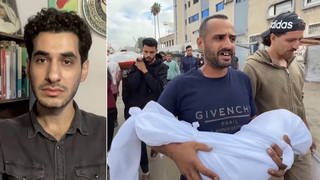
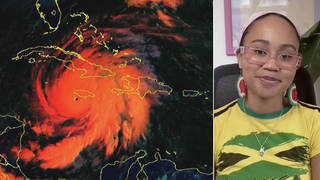
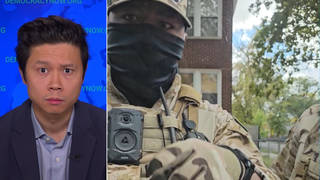
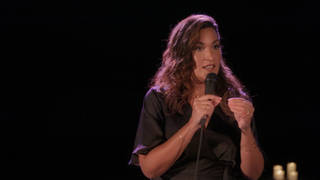





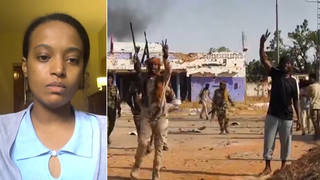
Media Options